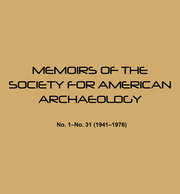No CrossRef data available.
Article contents
Problems related to delimiting the culture areas of Asia
Published online by Cambridge University Press: 27 June 2018
Extract
Since 1944, the writer has given some thought to the problems of marking out the culture areas of Asia, although there has not been opportunity for anything like a comprehensive trait distribution study of the continent (Bacon & Hudson, 1945; Bacon, 1946). This paper, then, must be regarded only as a tentative second step in formulating some of the problems involved, and in mapping the culture areas of the continent (cf. Naroll, 1950, for mapping of Bacon, 1946).
Sapir defined culture areas as “groups of geographically contiguous tribes that exhibit so many cultural traits in common as to contrast with other such groups” (1949, p. 425). Although in Asia we are frequently dealing with nations rather than with tribes, Sapir's definition appears for the most part to be as acceptable for Asia as Wissler and Kroeber found it for North America and Herskovits for Africa.
- Type
- Research Article
- Information
- Copyright
- Copyright © Society for American Archaeology 1953
References
* Since this paper was written, Dr. Raphael Patai (1952) has described a Middle Eastern area of comparable magnitude.


